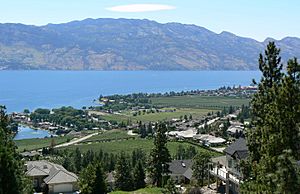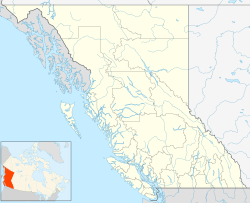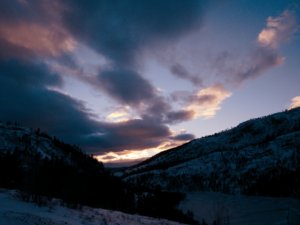West Kelowna facts for kids
Quick facts for kids
West Kelowna
|
|
|---|---|
| City of West Kelowna | |

West Kelowna as seen from Mount Boucherie
|
|
| Country | Canada |
| Province | British Columbia |
| Regional district | Central Okanagan |
| Incorporated (district municipality) |
December 6, 2007 |
| Name change | January 30, 2009 |
| Incorporated (city) | June 26, 2015 |
| Area | |
| • Total | 123.53 km2 (47.70 sq mi) |
| • Land | 122.09 km2 (47.14 sq mi) |
| Elevation | 484 m (1,588 ft) |
| Population
(2021)
|
|
| • Total | 36,078 |
| • Density | 296/km2 (770/sq mi) |
| Time zone | UTC−08:00 (PST) |
| Forward sortation area |
V1Z, V4T
|
| Area codes | 250, 778, 236, 672 |
| Highways | 97, 97C |
| Waterways | Okanagan Lake |
West Kelowna, once called Westside, is a city in British Columbia. It's located in the beautiful Okanagan Valley, right on the west side of Okanagan Lake. This city is made up of several different areas, like Glenrosa, Lakeview Heights, and Westbank. In 2021, about 36,078 people lived here.
West Kelowna officially became a municipality (a self-governing area) in 2007. It was first called Westside District Municipality. Later, in 2009, its name changed to West Kelowna. Then, in 2015, it became known as the City of West Kelowna.
Contents
History of West Kelowna
West Kelowna became its own municipality on December 6, 2007. Before that, it was a rural area managed by the Central Okanagan Regional District since the 1970s.
In June 2007, people living in the area got to vote on how they wanted to be governed. They could choose to become their own municipality or join the nearby City of Kelowna. Most residents voted to become their own municipality. About 48% of people voted. Those living further from Kelowna mostly voted to become a new municipality. People closer to Kelowna often wanted to join Kelowna.
This wasn't the first time people voted on this. In 1980 and 1994, residents had voted against becoming a separate municipality.
In 2007, Rosalind Neis was elected as the first mayor. She wanted to try and join Kelowna, but this didn't happen. In 2008, Doug Findlater became the mayor and served for three terms. During the 2008 election, residents also voted on a new name for the municipality. They chose West Kelowna over other options like Westbank. The name West Kelowna became official on January 30, 2009.
In 2015, West Kelowna officially became known as a city. In 2018, Gord Milsom became the mayor and was re-elected in 2022.
In August 2023, a large wildfire spread quickly because of strong winds. It threatened the city and caused many homes to burn down. Many people had to leave their homes for safety. Over 50 homes were destroyed, and thousands of people were evacuated. The fire was finally under control in late September.
Geography of West Kelowna
The City of West Kelowna is located on the western shores and hillsides of Okanagan Lake. It's a main entry point to the Central Okanagan region if you're coming from the west on Highway 97C.
The city includes many neighbourhoods like Glenrosa, Shannon Lake, and Westbank in the south. These areas are home to about half of the city's population. In the north, you'll find areas like West Kelowna Estates and Lakeview Heights. Many of these neighbourhoods have a long history, some dating back to the 1800s.
West Kelowna is next to the District of Peachland and two self-governing areas of the Westbank First Nation (WFN). These areas are called Tsinstikeptum 9 and Tsinstikeptum 10.
Population of West Kelowna
| West Kelowna Population History |
||
|---|---|---|
| Year | Pop. | ±% |
| 2006 | 27,214 | — |
| 2011 | 30,892 | +13.5% |
| 2016 | 32,655 | +5.7% |
| 2021 | 36,078 | +10.5% |
| Source: Statistics Canada | ||
In the 2021 Census, West Kelowna had a population of 36,078 people. This was a good increase from its population of 32,655 in 2016. The city covers about 122.09 square kilometers (47.14 square miles).
Economy of West Kelowna
West Kelowna has a strong and varied economy. It includes many different types of businesses. These include farming, construction, finance, food services, retail stores, and light industry. Lumber manufacturing, technology, and tourism are also important. The city is also known for its wineries. More than 2,200 business licenses are given out each year.
The larger Westside economic region has over 52,000 people. This includes West Kelowna, the Westbank First Nation, Peachland, and nearby rural areas. This region is part of the Central Okanagan Regional District, which has over 208,000 residents.
Popular shopping areas in West Kelowna include Boucherie Centre and Lakeview Heights Shopping Centre. These places have many shops, cafes, restaurants, and places for tourists to stay. West Kelowna also has a beautiful wine trail with many wineries. There's also a farm loop where you can find local farm products and farmers' markets. The Gellatly Bay area has a path for walking and a water park.
Some of the biggest private employers are Gorman Bros. Lumber and Mission Hill Family Estate Winery. Major public employers include Interior Health and the local school district. The Westbank First Nation also has many businesses, including large stores, restaurants, and entertainment options.
Education in West Kelowna
West Kelowna is part of School District 23 Central Okanagan. The main high school is Mount Boucherie Senior Secondary School, which serves students from grades 9 to 12.
There are two middle schools for grades 6 to 8: Constable Neil Bruce Middle School and Glenrosa Middle School. The city also has nine public elementary schools, including George Pringle, Glenrosa Elementary School, and Shannon Lake.
For private education, there's Our Lady of Lourdes Catholic School. Sensisyusten House of Learning is an Indigenous school located in the nearby Westbank First Nation community. For students who want to continue their education after high school, there are colleges and universities in nearby Kelowna, like UBC Okanagan and Okanagan College.
Recreation and Culture in West Kelowna
West Kelowna has many parks for fun and sports. You can find soccer fields, baseball fields, playgrounds, and hiking trails. Some popular spots include the Constable Neil Bruce Soccer Fields and the Mount Boucherie Ball Diamonds. There are also tennis courts and a sports field.
Westbank Town Centre Park has a community garden, dog parks, and a popular water park for kids. Along Gellatly Road, there's a walking trail by the lake. You can also find several swimming spots on Okanagan Lake, like Willow Beach.
For outdoor adventures, check out the trails in Eain Lamont and Mount Boucherie Parks. Glen Canyon, Goats Peak, Kalamoir, and Rose Valley Regional Parks also have great trails. In winter, Telemark is a popular place for snowshoeing and cross-country skiing.
The Mount Boucherie Community Centre has the Royal LePage Place arena, where the West Kelowna Warriors hockey team plays. It also has the Jim Lind Arena for ice sports like figure skating and ringette. The Johnson Bentley Memorial Aquatic Centre in downtown Westbank offers indoor swimming. Memorial Park has a skateboard park. The city also supports youth and seniors' centres.
During July and August, you can enjoy free Friday night concerts at the Annette Beaudreau Amphitheatre in Memorial Park. This park also hosts many events and concerts during the annual Westside Daze celebration, which includes a parade and a fun fair.
Shannon Lake Golf Course is the only 18-hole golf course in West Kelowna. Another 18-hole course, Two Eagles Golf Course, is nearby in the Westbank First Nation area.
To learn about the area's past, you can visit the Westbank Museum. It has exhibits and items from the pioneer days. There are also smaller galleries that show art by local artists. The Westbank First Nation also has an Indigenous museum.



